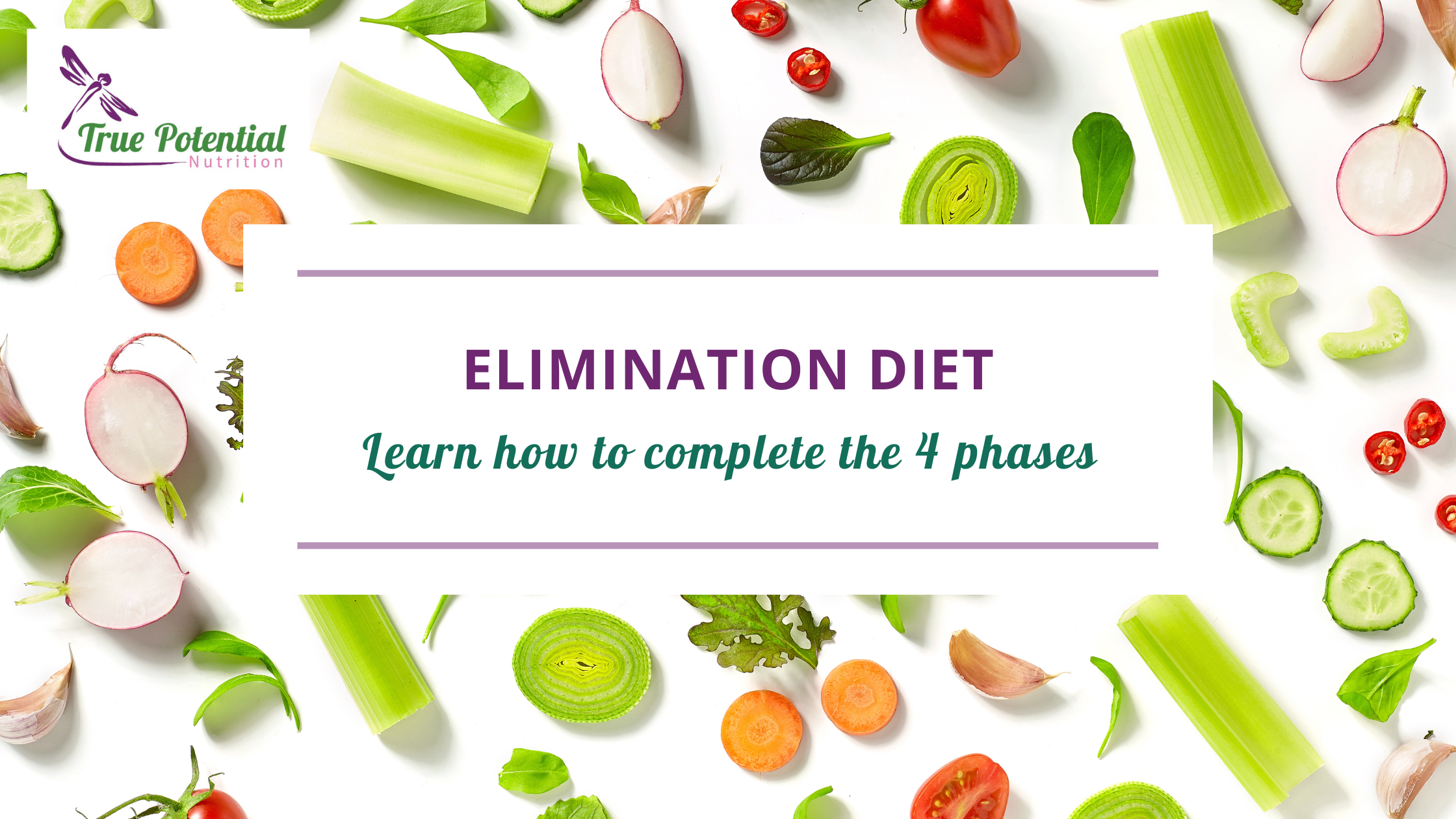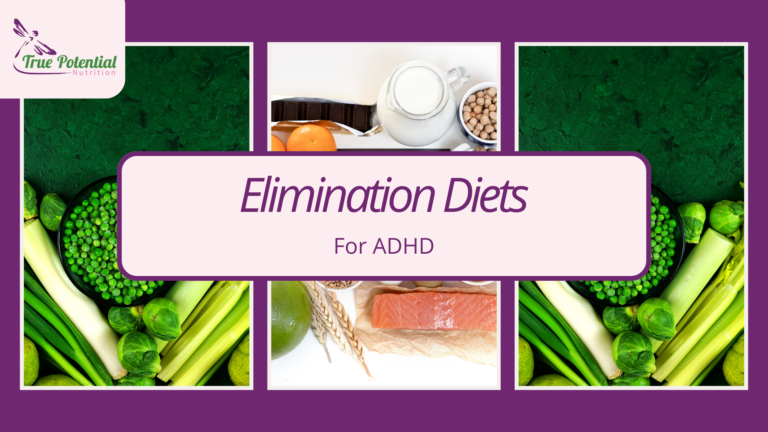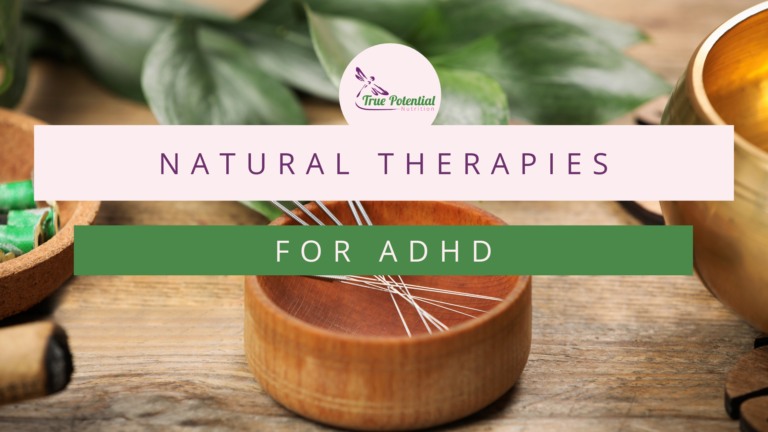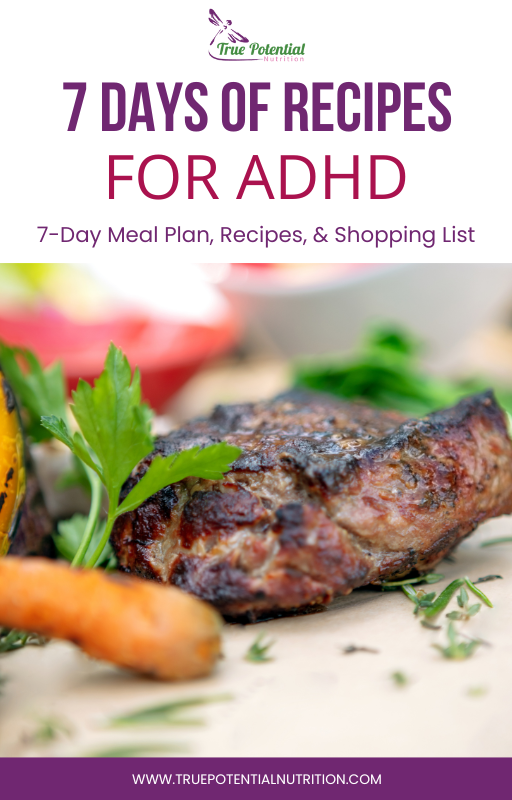By Danielle MacDowell

Main Takeaways
- There are three categories to consider when discussing food reactions: food allergies, food sensitivities, and food intolerance.
- Food Intolerance is the inability to process or digest food.
- Food Sensitivity: Symptoms that occur after ingesting a specific food that are not related to intolerance, allergy, or celiac disease.
- Food allergies: The body mistakes food for a harmful agent and recruits the immune system to fight it. Unlike food intolerance, there are no digestion issues.
- Food allergies are a specific immune system response that recruits immunoglobulin E (IgE).
- There are 4 Phases of Elimination Diet: Planning, Eliminating, Reintroducing, Recreating.
- The Planning Phase (phase 1) will help you determine when the best time for you to begin the elimination phase. It is best to avoid times when you know dieting will be more challenging, like during a vacation or during a big life change.
- The Elimination Phase (phase 2) spans between 2-4 weeks. During this time, you will eliminate all of the foods your practitioner selected. There are no exceptions because you want to get the results you are seeking. If you slip, it is ok, but you will have to start from scratch. So, be diligent, read labels, and plan ahead so you can avoid this.
- The Challenging Phase (phase 3) begins as early as two weeks or as late as four weeks into the elimination phase. It is highly variable because you must be symptom-free for 5 days before beginning this phase
- The Recreating Phase (Phase 4) allows you and your practitioner to create a diet plan to move forward with. Prior to this point, you have hopefully identified most (if not all) of the foods that were causing your symptoms.
Table of Contents
Have you ever had a sneaky suspicion that one of your favorite foods could be causing some of your less than desirable symptoms, like migraines, gas, or skin irritations? I have certainly been there. I used to get bad bouts of eczema. For the longest time, I was completely unaware that one of my favorite foods was the culprit. It wasn’t until I completed an elimination diet that I was able to identify dairy as being the source behind my symptoms. As sad as I was to forgo my daily yogurt, boy was I relieved to no longer have eczema. With all this being said, I know that I am not alone in my desire to stave off unfavorable symptoms, so I wanted to break down the elimination diet protocol for those who feel that the food(s) they are eating are also causing them symptoms.
Before getting into the ins and outs of the elimination diet, its important to understand the terminology attached to food-related issues.
Food Allergies, Food Intolerance & Food Sensitivities
When thinking about adverse reactions caused by foods, we need to consider three categories: food allergies, food sensitivities, and food intolerance. There is an important distinction between the three. While we cover the basics here, we will delve into more details on each of these three classifications in future blogs.
Food Intolerance: Food intolerance is the inability to process or digest food properly.
A common example of food intolerance is lactose intolerance. Lactose is a sugar found in dairy, and for us to digest this sugar, we need an enzyme called lactase. However, after infancy, 65% of us will experience a reduced ability to digest lactose. [1] Interestingly enough, genetics play a role in this enzyme deficiency. For example, individuals of East Asian descent have a high rate of lactose intolerance, ranging between 70-100%, while those from northern Europe are better equipped to handle the sugar, with only 5% of them being lactose intolerant. [1] It is suspected that their reliance on unfermented dairy is attributed to this adaptation.
Food Allergies: To define this simply, when a person has a food allergy, the body “mistakes” a particular food for a harmful agent and, as a result, recruits the immune system to fight the food. Unlike food intolerance, there are no digestion issues. Food allergies are directly related to our immune defenses.
Out of the three reactions discussed here, food allergies elicit the most significant responses from the body. The immune system reactions range from mild to life-threatening. So, it is crucial to be aware of the common symptoms associated with food allergies. If you suspect that you have an allergy, it is critical to seek council from your doctor immediately.
Over 160 foods can cause allergic reactions in people with allergies, however, the FDA [3] has identified the 8 most common food allergens:
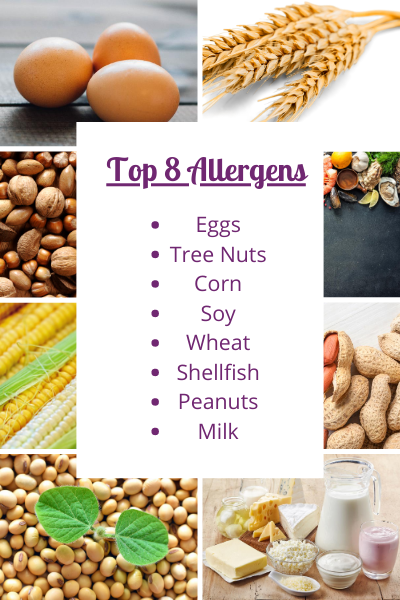
Food Sensitivity: Symptoms that occur after ingesting a specific food that is not related to intolerance, allergy, or celiac disease. [2]
Food sensitivities can be the most difficult to detect. Although they are not as dangerous as food allergies, they can be uncomfortable and should not be dismissed. Symptoms of food sensitivity include joint pain, fatigue, gastrointestinal distress, and rashes. [2] Unfortunately, it is not always easy to pinpoint the food causing the issue because the symptoms may not occur immediately after eating. Also, considering we rarely eat one food item at a time, it can be especially hard to nail down the irritants. This is where an elimination diet comes into play.
The Elimination Diet has been deemed the “gold standard” method to identify food sensitivities. [2] However, it takes a lot of work, rigidity, and focus, making it a difficult diet to adhere to. While it is not easy, properly deploying the elimination diet has the potential to positively enhance your quality of life if you are unknowingly dealing with a food sensitivity.
*Words of Caution: Please note that this is not an endorsement or a suggestion to go on this diet, this is solely for informational purposes. As always, before starting a new diet, it is important to consult with a medical professional. This diet is not meant for everyone. Due to its restrictive nature, this diet can be particularly triggering for those who have an eating disorder, disordered eating tendencies or who have had an eating disorder in the past. So, if you or someone you are supporting fall into any of these categories, extra precautions should be taken before beginning this diet.
How to Complete the 4 Phases of the Elimination Diet
There are specific procedures that must be followed for the elimination diet to work. I will outline some of the main points here.
There are four phases of the diet: Planning, Eliminating, Reintroducing, and Recreating.
Phase 1: Planning to Complete and Elimination Diet
During phase 1 of an elimination diet, you will work with your medical professional to discuss the foods most likely responsible for your symptoms.
This is an excellent opportunity for your practitioner to get a better understanding of your whole profile.
You are likely to discuss possible food triggers, symptoms and cravings. You will probably speak about the foods that make you feel better and those that make you feel worse, as well.
Additionally, this will be a good time for you to determine your readiness to commit to the diet and also identify potential obstacles to your adherence.
Your practitioner will want to set you up for success, so they will help you establish a good time for you to start.
Real-World Tip: Speaking from experience, I would not recommend starting the elimination diet before a vacation, holiday, or any significant life change/event (e.g., wedding, move, new job, etc.).
Bring a few start dates to the table and figure out when you are going to feel best about embarking on the challenge.
Summary: Phase 1 of an elimination diet, the planning phase, will help you determine when the best time for you to begin the elimination diet. It is best to avoid times when you know dieting will be more challenging, like during a vacation or a significant life change.
Phase 2: Elimination of Foods
Phase 2: Eliminating
The elimination phase (phase two) spans between 2-4 weeks.
During phase two, you will eliminate all of the foods your health care professional identified for you. Remember adherence is fundamental to success.
You will have to eliminate all foods. No exceptions. Because you are trying to figure out what foods cause your symptoms, you cannot be lenient in this plan. You will also have to be very diligent about reading nutrition labels.
Many common allergens are found in unexpected foods. So before eating anything, read the label. Yes, it is cumbersome, but if you are going to do it, you deserve to get the results you are seeking.
Real World Tip: If you slip or make a mistake, don’t beat yourself up, but know that you will have to start over for this diet to be effective. [4] I know how disheartening it can be to start over when you have already put in so much effort. This is why it is so critical to start when you are ready.
Summary: In phase 2 of an elimination diet, the eliminating phase, you will eliminate all of the foods your practitioner selected. There are no exceptions because you want to get the results you are seeking. If you slip, it is ok, but you will have to start from scratch. So, be diligent, read labels, and plan ahead so you can avoid starting over.
Phase 3: Reintroduction Phase of Elimination Diet
Phase 3, the reintroduction phase, can begin as early as two weeks after the elimination phase or as late as four weeks into the elimination phase. [4] Ultimately, the commencement of this phase will be determined by when your symptoms subside. Once you have been symptom-free for 5 days, you can begin phase 3, the reintroduction phase . [4]
It is critical that you are symptom-free for a period of time before starting the reintroduction phase.
If your symptoms do not clear up after four weeks within phase 2, you will want to consult with your medical professional to determine if additional foods need to be eliminated or to determine if there is something else going on.
The reinroduction phase begins when you add a new food back into your diet. The reintroduction of foods is going to be a slow and deliberate process. This is where your real detective work begins and a journal will come in handy.
You will typically add a new food into your diet every three days. When doing so, you will need to monitor, and record your symptoms. Be aware that it can take up to three days for symptoms to appear. [4]
You will be directed to eat a small portion of one new food on day one. You will then double this portion on day 2 and then eat an even larger portion on day 3.
It is very important to journal any symptoms that arise, as this will be the information you and your practitioner use to reflect on in order to make any dietary changes.
You may find that you can tolerate small amounts of some foods but will not be able to tolerate larger amounts of the same food. Record these findings, including as much descriptive information as possible.
If you experience symptoms after eating a particular food, place it on the “do not eat” list and stop eating it immediately. To make sure you didn’t get a false positive, reintroduce the food in 4-5 days as a way to retest and confirm that the symptom experiences were caused by the food. [4]
Summary: The challenging phase (phase 3) can begin as early as two weeks or as late as four weeks into the elimination phase. If your symptoms have gone away after two weeks AND you have been symptom-free for 5 days then, you can begin phase 4.
Phase 4: Long-Term Planning Following an Elimination Diet
At this point, you should have a better idea of the foods that are responsible for your symptoms. However, the Elimination Diet is not perfect. You may have to perform the process a couple of times if you are still experiencing symptoms. [4]
If you find that you have to remove a substantial amount of foods and/or foods that have important nutrients, you will have to speak with your doctor about replacing these nutrients.
The University of Wisconsin [4] cautions that as you whittle down your diet, you may not receive the important nutrients your body needs. On the other hand, as you remove foods that irritate you, you may be able to absorb nutrients better.
Keep an open line of communication with the healthcare practitioner you are working with at all times to be sure you are performing this diet properly.
*Important Note: While an elimination diet can be a helpful diagnostic tool, it is typically not meant to be a forever diet, except in the case of IgE-mediated food allergies. So, during your long-term planning, speak with your healthcare professional about how to get your body in a place to be able to tolerate more foods.
Final Thoughts and Main Takeaways
There are three categories to consider when discussing food reactions: food allergies, food sensitivities, and food intolerance. Food intolerance is the inability to process or digest food. Food Sensitivity results in symptoms that occur after ingesting a specific food that are not related to intolerance, allergy, or celiac disease. Food allergies occur when the body mistakes food for a harmful agent and recruits the immune system to fight it.
An elimination diet may help an individual identify foods that are causing symptoms with an unknown etiology. However, this diet is not meant for everyone. Due to its restrictive nature, this diet can be particularly triggering for those who have an eating disorder, disordered eating tendencies or who have had an eating disorder in the past. So, if you or someone you are supporting fall into any of these categories, extra precautions should be taken before beginning this diet.
Remember, while an elimination diet can be a helpful diagnostic tool, it is typically not meant to be a forever diet. So, during your long-term planning, speak with your healthcare professional about how to get your body in a place to be able to tolerate more foods.
- National Institute of Health. Lactose Intolerance. https://ghr.nlm.nih.gov/condition/lactose-intolerance#statistics. Updated on August 4, 2020.Updated January 30, 2020. Accessed on August16th, 2020.
- Campos, M. Food allergy, intolerance, or sensitivity: What’s the difference, and why does it matter? https://www.health.harvard.edu/blog/food-allergy-intolerance-or-sensitivity-whats-the-difference-and-why-does-it-matter-2020013018736. Updated January 30, 2020. Accessed on August16th, 2020.
- U.S Food and Drug Administration. What You Need to Know about Food Allergies. https://www.fda.gov/food/buy-store-serve-safe-food/what-you-need-know-about-food-allergies#:~:text=In%20fact%2C%20if%20not%20treated%20promptly%2C%20these%20symptoms,food%20to%20which%20he%20or%20she%20is%20allergic. Updated September 26, 2018. Accessed on August16th, 2020.
- University of Wisconsin Integrative Health. Elimination Diet. https://www.fammed.wisc.edu/files/webfm-uploads/documents/outreach/im/handout_elimination_diet_patient.pdf#:~:text=University%20of%20Wisconsin%20Integrative%20Health%20www.fammed.wisc.edu%2Fintegrative.%20The%20Elimination,foods%20are%20causing%20symptoms%20or%20making%20them%20worse. Updated on November 2018. Accessed on August16th, 2020.
